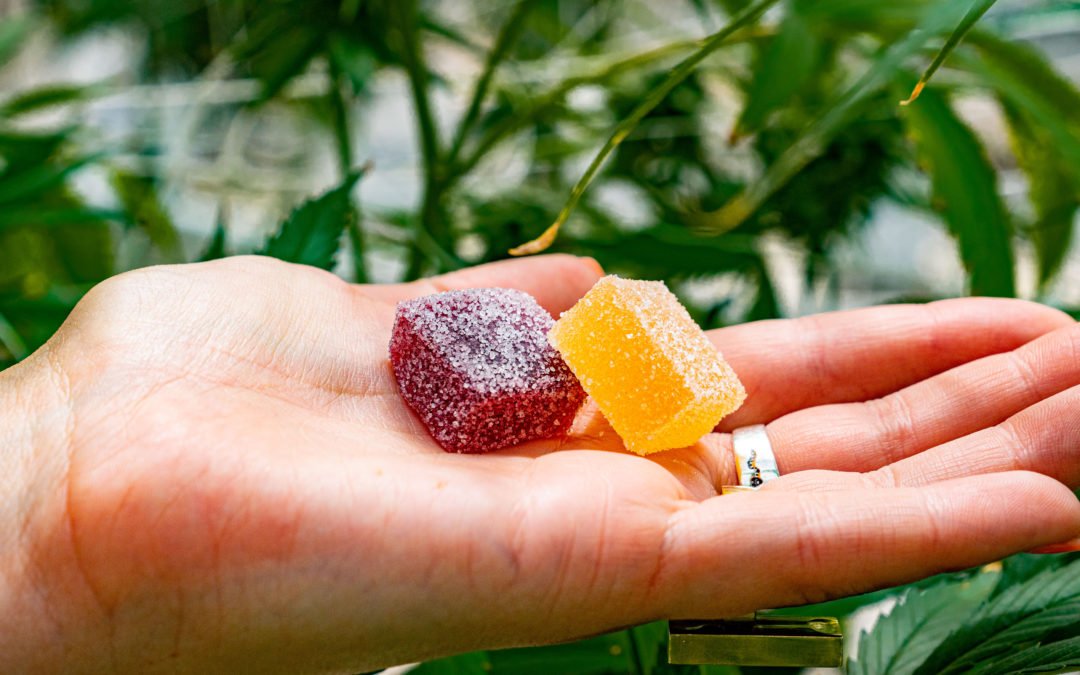Edibles 101: The Complete Guide to Cannabis Dosage, Onset Time, and Safe Consumption

Cannabis edibles have revolutionized how people consume marijuana, offering a smoke-free alternative with longer-lasting effects. According to the National
Institute on Drug Abuse, edibles represent one of the fastest-growing segments of the legal cannabis market. However, the unique characteristics of edibles require a different
approach to dosing and timing compared to other consumption methods. Whether you’re a curious beginner or looking to refine your edible experience, understanding proper dosage, onset
times, and safety protocols is essential for an enjoyable and safe journey.
What Are Cannabis Edibles?
Cannabis edibles are food products infused with cannabinoids, primarily THC (tetrahydrocannabinol) and CBD (cannabidiol). Unlike smoking or vaping, which deliver cannabinoids directly to the bloodstream through the lungs, edibles must be digested and
metabolized by the liver. This process, known as first-pass metabolism, converts THC into 11hydroxy-THC, a more potent compound that creates different effects than smoking.
Popular edible formats include gummies, chocolates, beverages, baked goods, capsules, and tinctures. Each product type may have different absorption rates and bioavailability, making it crucial to understand how your chosen edible works before consumption.
Understanding Cannabis Dosage in Edibles
Standard Dosing Guidelines
The cannabis industry has established standard dosing guidelines based on research from institutions like the University of Colorado and recommendations from state regulatory bodies:
Microdose (1-2.5mg THC): Ideal for beginners or those seeking subtle effects without impairment. Perfect for maintaining productivity while experiencing mild relaxation or pain relief.
Low Dose (2.5-15mg THC): Suitable for new users or those with low tolerance. Provides noticeable effects including mild euphoria, stress relief, and enhanced creativity without overwhelming psychoactive effects.
Moderate Dose (15-30mg THC): Recommended for regular users with established tolerance. Delivers stronger euphoria, altered perception, and significant therapeutic benefits. Coordination may be impaired.
High Dose (30-50mg THC): For experienced users only. Produces strong psychoactive effects, significant impairment, and potential anxiety in sensitive individuals.
Very High Dose (50-100mg+ THC): Reserved for medical patients with high tolerance or those with specific therapeutic needs. Not recommended for recreational users.
Factors Affecting Dosage Requirements
Several personal factors influence how edibles affect you:
Body Weight and Metabolism: Individuals with higher body weight may require larger doses, while those with faster metabolisms might experience quicker onset but shorter duration.
Cannabis Tolerance: Regular users develop tolerance, requiring higher doses for similar effects. Taking tolerance breaks can help reset sensitivity.
Individual Sensitivity: Some people are naturally more sensitive to THC due to genetic variations in cannabinoid receptors and metabolism enzymes. Research published in Nature shows that genetic differences in the endocannabinoid system significantly impact individual responses to cannabis.
Food Consumption: Taking edibles on an empty stomach increases absorption speed but may intensify effects. Consuming with fatty foods can enhance absorption but slow onset.
Medications: Certain medications may interact with cannabis or affect how your body processes THC, potentially altering dosage requirements. The Mayo Clinic provides guidance on potential drug interactions with cannabis.
Onset Time: What to Expect
Typical Onset Timeline
Understanding onset time is crucial for safe edible consumption. According to research from Johns Hopkins Medicine, the delayed onset of edibles contributes to many overconsumption incidents:
30 minutes to 2 hours: Standard onset range for most edibles. Effects typically begin subtly and gradually increase.
Peak Effects: Usually occur 2-4 hours after consumption, when THC levels in the bloodstream reach their highest point.
Total Duration: Effects can last 4-12 hours, with residual effects sometimes persisting up to 24 hours.
Factors Influencing Onset Time
Product Type: Sublingual products (tinctures, dissolving strips) may take effect in 15-45 minutes, while baked goods might take 1-2 hours.
Stomach Contents: Empty stomachs lead to faster onset, while full stomachs delay absorption but may provide more consistent effects.
Individual Metabolism: Faster metabolizers experience quicker onset, while slower metabolizers may wait longer for effects to begin.
Dosage Amount: Higher doses don’t necessarily mean faster onset but may result in more intense effects once they begin.
